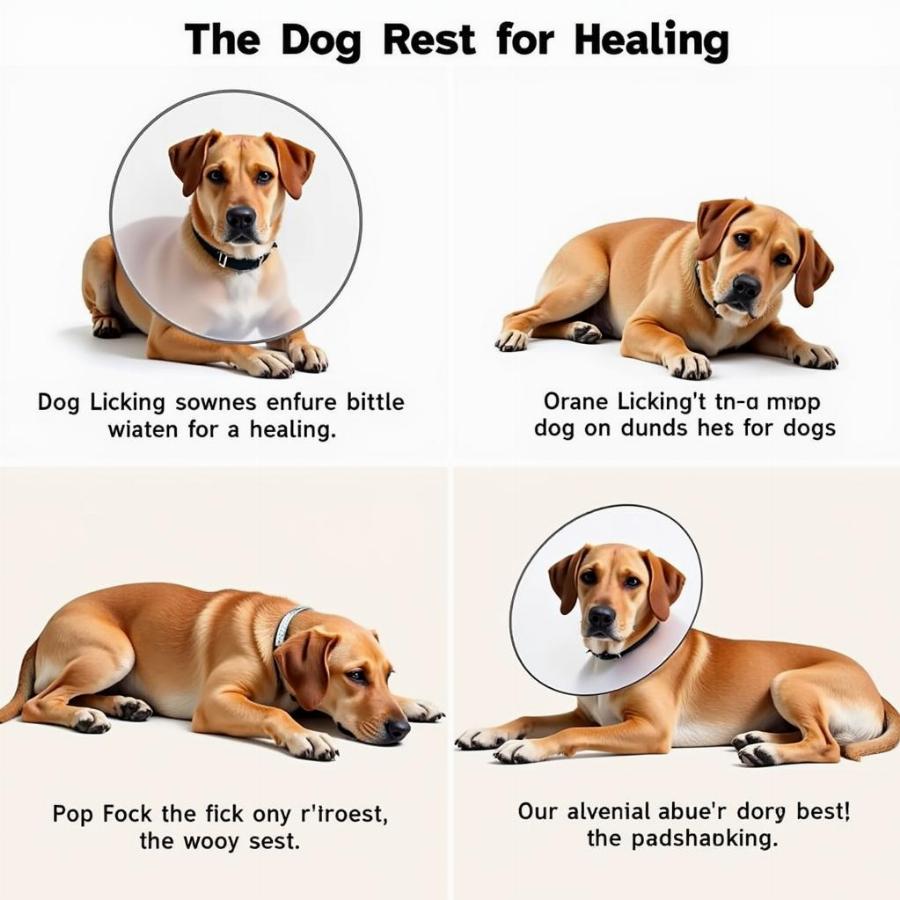Caring for a dog’s cut requires more than just cleaning the wound. Applying the correct dog cut ointment is crucial for preventing infection, promoting healing, and minimizing discomfort for your furry friend. Whether it’s a minor scrape from playtime or a more serious cut, understanding which ointment to use and how to apply it is essential for responsible pet ownership. Choosing the wrong product or improper application can hinder the healing process and even lead to further complications.
Understanding Dog Cut Ointments: Types and Uses
Not all dog cut ointments are created equal. Different types serve different purposes, and understanding these distinctions is crucial for effective wound care.
Antibacterial Ointments
These are the most common type of dog cut ointment and are designed to prevent bacterial infections. They contain active ingredients that kill bacteria and create a barrier against further contamination. Look for ointments containing bacitracin or neomycin. These are generally safe and effective for minor cuts and abrasions. However, it’s important to monitor your dog to ensure they don’t lick the ointment off, as ingestion of large amounts can be harmful.
Antifungal Ointments
If your dog’s cut shows signs of a fungal infection, such as redness, itching, or a distinct odor, an antifungal ointment might be necessary. These ointments typically contain ingredients like clotrimazole or miconazole.
Anti-inflammatory Ointments
These ointments help reduce swelling and pain associated with the cut. They often contain hydrocortisone, which can provide relief for your dog. However, overuse of hydrocortisone can have negative side effects, so it’s essential to consult with your veterinarian before using these ointments, especially on deep or extensive wounds.
Applying Dog Cut Ointment: A Step-by-Step Guide
Proper application of dog cut ointment is just as important as choosing the right product. Here’s a step-by-step guide to ensure effective and safe application:
- Clean the wound: Before applying any ointment, thoroughly clean the cut with warm water and a mild antiseptic solution.
- Dry the area: Pat the wound dry with a clean gauze pad. Avoid rubbing, as this can irritate the injured area.
- Apply a thin layer of ointment: Using clean hands or a cotton swab, apply a thin layer of ointment directly to the cut. Avoid over-applying, as this can create a moist environment that encourages bacterial growth.
- Cover the wound (if necessary): For deep or extensive cuts, your veterinarian may recommend covering the wound with a bandage to prevent further contamination and licking.
- Monitor the wound: Regularly check the wound for any signs of infection, such as increased redness, swelling, or pus. If you notice any of these signs, contact your veterinarian immediately.
When to Consult a Veterinarian
While minor cuts can often be treated at home, some situations require professional veterinary care. Consult your veterinarian if:
- The cut is deep or extensive.
- The wound is bleeding heavily.
- There are signs of infection.
- Your dog is experiencing significant pain or discomfort.
- The wound isn’t healing after a few days.
Choosing the right dog cut ointment is critical for quick healing.
Following these guidelines ensures your furry friend receives the best possible care. Remember, always consult with your veterinarian if you have any concerns about your dog’s wound.
FAQ: Dog Cut Ointment
- Can I use human antibiotic ointment on my dog? While some human ointments may be safe for dogs, it’s best to use products specifically formulated for pets.
- How often should I apply the ointment? Follow your veterinarian’s instructions. Generally, applying the ointment once or twice a day is sufficient.
- What if my dog licks the ointment off? Try to prevent your dog from licking the ointment. If they ingest a significant amount, contact your veterinarian.
- How long does it take for a dog’s cut to heal? Healing time varies depending on the severity of the cut. Minor cuts may heal within a few days, while deeper cuts can take several weeks.
- What are the signs of a dog cut infection? Redness, swelling, pus, and a foul odor are all signs of infection.
- Can I use Neosporin on my dog? While small amounts of Neosporin are generally considered safe, it’s crucial to use the original formula and prevent your dog from licking it. It’s always best to consult your vet for the best treatment options.
- What is a natural remedy for dog cuts? Honey has natural antibacterial properties and can be applied to minor cuts after cleaning. However, always consult your vet before using any home remedies.
 Dog Wound Care Tips
Dog Wound Care Tips
You might also be interested in our articles on images of dog teeth and how much for dog grooming. Proper dental hygiene is an important aspect of overall dog health, and regular grooming can prevent matting and skin issues that could lead to cuts and abrasions. Knowing how to identify potential problems early is key to preventative care. Additionally, you may want to know more about vetracin for dogs and understanding when it’s appropriate for your pet’s specific needs. You may also find our article about dog grooming cda useful. For dogs with ear issues, you can visit our dogs ears swollen to find more helpful information.
Beaut Dogs is your one-stop resource for all things dog-related. We provide comprehensive information on various breeds, care tips, and product recommendations to help you provide the best care for your canine companion. When you need expert advice, email us at [email protected] for detailed and accurate answers from Beaut Dogs.